

Guest Exhibitors at the Tucson Gem and Mineral Shows
You may have seen a new lapidary material being offered for sale recently. It's called "Nebula StoneTM," and is a dark-green, nearly black, shiny material with fascinating, light-green, swirling orbicules scattered through the dark matrix. These inclusions make the rock look like the night sky viewed through a telescope, wherein you see galaxies, nebulae and individual stars scattered against a dark background- hence, the name Nebula Stone.
Trade marking is internationally recognized to protect and guard against fraudulent imitations.
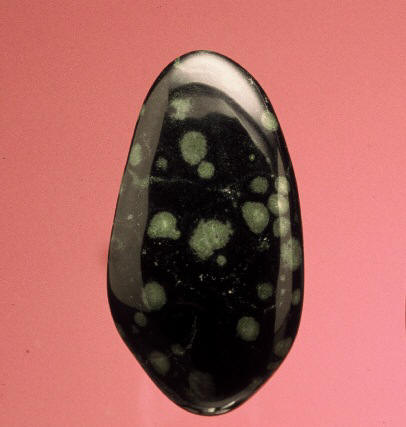
Photo by Jeff Scovil
Nebula Stone Tumbled Stone , Nebulastone
Nebula Stone is certainly an unusual and handsome lapidary material. It is found in large enough masses so it can be worked in a variety of ways. It is not mined by blasting, so has few cracks or stresses that can affect specimens as they are worked.
The material is tough enough to work easily without spalling or chipping, and it takes a good polish. It can be cut and shaped, carved and slabbed. It's yet another good material in the lapidary's repertoire.
What makes Nebula Stone so unusual is that it has been analyzed by several noted scientists without anyone coming up with a definitive answer as to what type of rock it actually is. Using a variety of recognized techniques, scientists have studied the rock carefully, yet cannot come to a final, similar conclusion.
Ron and Karen, the rockhounds who found this unusual gem material on one of their frequent trips to the wilds of Southern Mexico, Belize and Guatemala decided to do things right before marketing Nebula Stone. So they sent samples to Leslie Hale, museum specialist, Smithsonian Institution; Dr. George, American Museum of Natural History; Sid Williams, head of Globo de Plomo Research Lab; Dr. Dave Douglass, retired researcher, UCLA; Virgil Leuth, New Mexico School of Mines; and Dr. Bruce Geller, associated with Geo Concepts, Unlimited. Clearly, these are highly qualified and well-regarded scientists. Each examined the new material and came up with variations on a theme--one originally developed by Sid Williams. Williams carefully studied a sample of the material and concluded that Nebula Stone is a quartz pentellerite formed as "a glassy unit that devitrified slowly under quiescent conditions."
What this means is that the material was once molten and glass-like but cooled very slowly, allowing the discrete minerals to begin to separate out and crystallize so the final product had lost its glass-like condition. This allowed the orbicules (or spherulites, if you prefer) to form as the different component minerals cooled and crystallized at various rates. It is these little clusters or spherulites of discrete minerals which give the sky-like appearance to Nebula Stone.
The minerals of which Nebula Stone are made include quartz, anorthoclase feldspar, riebeckite and aegirine. The first two form the groundmass of the gem, while the latter two are an integral part of the spherulites.
Shown at right is eye detail from similar material
which they have dubbed "Supernova Stone."
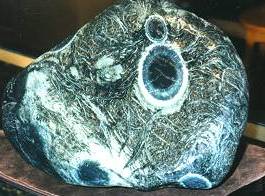
All this suggests that the rock is igneous. But other research suggests it may be metamorphic, a tentative conclusion reached by work done at the American Museum of Natural History. The American Museum sample also revealed the presence of zircon in the structure.
Dave Douglass also came up with the conclusion that the rock was a form of jade. He called it chloromelanite, a green- to black-flecked variety of jadeite. He based his conclusions on x-ray dispersion analysis (EDX) in a scanning electron microscope. He also used x-ray diffraction on the samples. The lack of magnesium and calcium in the green areas he studied eliminated nephrite jade as a possibility, while suggesting a jadeite conclusion (yet to be verified).
Virg Leuth concluded the rock has an igneous origin. His work with a petrographic microscope and x-ray diffraction found yet another mineral--arfedsonite, closely related to aegirine--in his sample.
Though these tentative conclusions seem to vary widely, they can all be accounted for when you realize that each scientist was working with a different sample, or samples, not necessarily gathered from the same exact spot in the formation. With different testing methods also employed, along with different means of sample preparation, you can readily see why there is a variety of conclusions--conclusions which can only be refined and finalized upon further study.
What is important for the rockhound is to know that these scientists do agree on one thing: This is definitely something new, different and yet to be described in the scientific literature. This is exciting stuff for a couple of weekend rockhounds who had the intelligence to recognize a unique material during their rock-collecting forays and then, instead of rushing to capitalize on their discovery, had the good sense to recruit scientific help in establishing the identity of their find.
Though not yet conclusively identified as to rock type, Nebula Stone has certainly been identified by the discoverers as a good lapidary material, suitable for a variety of uses . . . and this by a different set of experts: people who actually work with gem rough! Its unusual eye-like spherulites can be related to the ancient belief in the all-seeing eye which has been a continuous symbol of many religions and incorporated in many belief systems extending back to very ancient times.
Nebula Stone is apparently igneous, so had it’s origin within the Earth. Science has shown that the elements of which the Earth is made had their origins in the stars, forming from primordial hydrogen during thermonuclear fusion within a nebula or star.
Being a practical person who enjoys minerals for their natural properties and scientific value, I find properties attributed to some minerals and crystals by metaphysical believers to be beyond my understanding. Yet many people find Nebula Stone to be an ideal agent for connecting the energy of the Universe which is dominated by nebulae and galaxies, with the energy of Earth… and themselves.
Since Nebula Stone has become increasingly popular among the metaphysical community, I find it important to include some of their beliefs here since this is a new stone and little can be found elsewhere in the literature.
According to Melody (well known in her field by that one name), author of the “Love is in the Earth” series, there are a number of esoteric properties attributed to Nebula Stone. It has been suggested that it aids memory and recall. It can free the mind to create and discover, while developing the full power of the mind by freeing it from the bonds of fear. Energies released give a person the courage to seek unknown regions of thought and knowledge, helping reveal information in ancient sacred texts and records.
Some people use Nebula Stone in determining whether foods are truly organic or only said to be so. This is done by “dowsing” the stone over the suspected food. And, because of the eye patterns in the stone, it has been suggested that Nebula Stone may be useful in the treatment of macular degeneration. It has also been suggested as an elixir to facilitate the cleansing of the kidneys. Though I do not subscribe to these beliefs, we must admit that people who do are a part of our hobby so should be included since they reflect an acceptance by some of ancient beliefs.
From the research so far we can make some interesting scientific conclusions. Though several experts have done initial studies on the stone, there seems to be no one conclusion that can yet be drawn as to Nebula Stone's rock type. Part of the problem is that the scientists have been using only a limited number of samples. As mentioned earlier, collecting techniques, the variety of test equipment used, individual interpretations and more can account for the obvious variations in test results.
Is the black included mineral aegirine or riebeckite, or are they both present? Is there a possibility the rock is a type of jadeite or is it quartz pantellerite, as Williams suggests?
If you draw no other conclusion from this report you should be impressed with the considerable variety of esoteric and very sophisticated equipment employed to study rocks and minerals. Such machines as the scanning electron microscope (SEM), back-scattered electron detector (BSE), and the electron microprobe, along with thin-section study and the like will eventually ferret out the truth. These tools are readily available at universities and in laboratories and they have been of immense help in developing an understanding of the earth's composition.
Yet, it is also obvious that in spite of the variety of equipment employed, coupled with the expert knowledge of scientists, the identification of some rocks and minerals is no easy task. My hat's off to the experts who, with great patience, vast abilities and perseverance have given us so extensive and accurate a picture of the earth today.
Again, since this is a relatively new gemstone, information on how it can be polished or tumbled is important. As for polishing, carver Lee Worthington suggests using tin oxide with a little vinegar and a pinch of Linde A--all this on leather.
As for tumbling, Ron suggests starting with 80-grit and tumble for four days. Rinse and clean and repeat the 80-grit for four days. From there, do four days each of 250-grit and 400-grit, being sure to wash and clean between each operation. Then shift to 600-grit for seven days and the stones will be ready to tumble polish. This is done with either tin- or cerium oxide.
You might be interested in knowing just how Nebula Stone was found. Ron and Karen, who are from Telluride Colorado, were hiking following an old path in the mountains, when they entered a hidden valley which they describe as follows:
"Everything appeared lush and vibrant, and there were many old trees watching over the valley. We felt as though we had entered a very special place--almost magical. The sounds and colors seemed enhanced and even the birds and animals seemed curious. We had never found any place quite like this before. . . . Unusually serene and peaceful."
It was in this ideal setting that they found their first example of Nebula Stone, a stone now enjoyed by the mineralogist, the lapidary and the spiritually inclined alike.
Bob Jones Senior Editor Rock and Gem Magazine
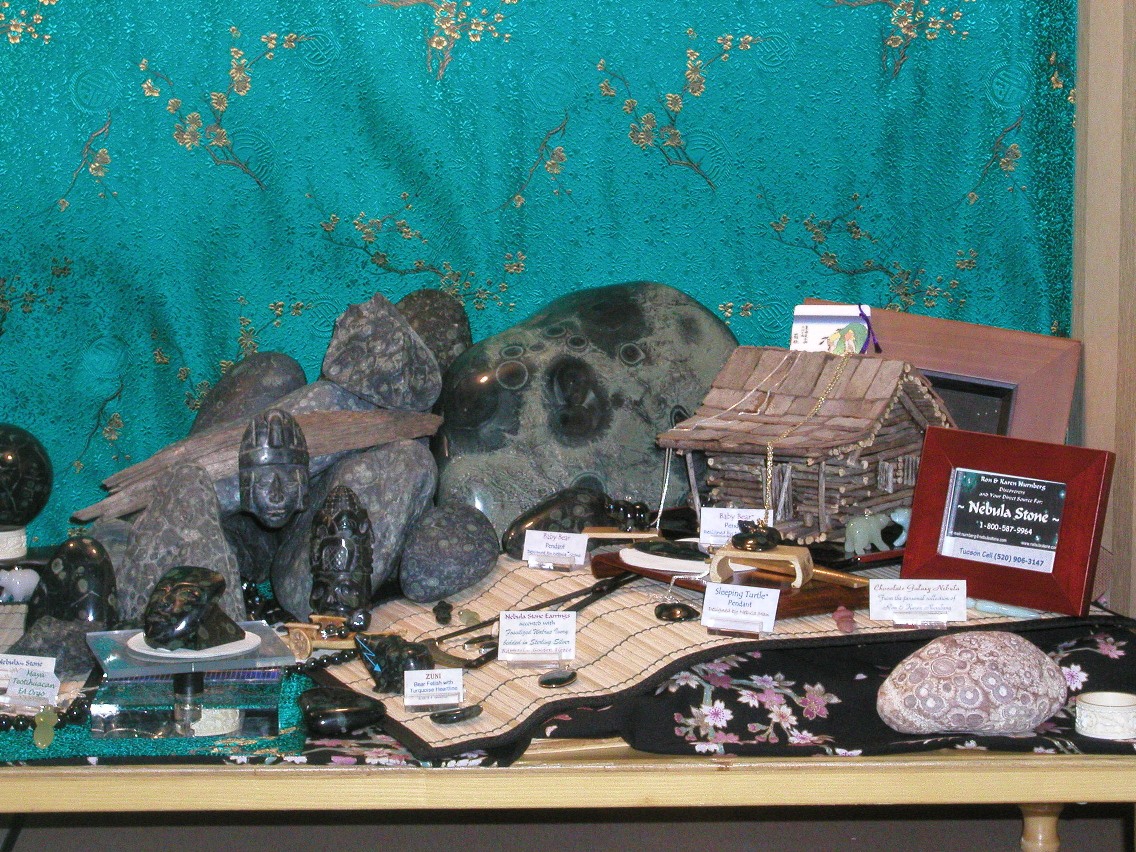
“We have never seen this type stone and cannot figure out what it is and where it came from.”
Smithsonian Institution
National Museum of Natural History
"This Gem conveys a sense of astronomical expanse
that qualifies it to be called the first outer space scenic stone".
Dave Federman
Editor-in-Chief
Colored Stone Magazine
Trade marking is internationally recognized to protect and guard against fraudulent imitations.
_______________________________________________________________________________________________________
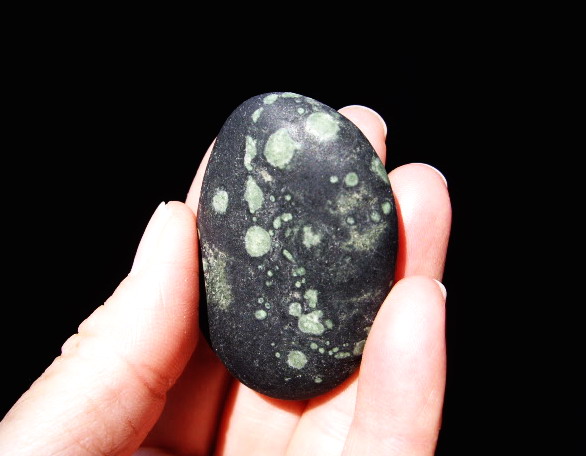
A note to Mineral Collectors
We have pages for those interested in the Scientific, the Geologic, the Mineralogical and the Esoteric for our many customers of varied interests.
Webster's dictionary: Esoteric/Metaphysical: Other than Physical. Relating to the transcendent or to a reality beyond what is perceptible to the senses.
I received a call from a gruff sounding gentleman that wanted to know about Nebula Stone. I didn't know what his interests were so I mentioned that he could read some of the stuff on the pages on our web site. I mentioned that there was scientific, Geologic/Mineralogical, Rock Hounding articles and esoteric/metaphysical writings.
He then said (real load) "Oh, I don't believe in that metaphysical Crap"
whereupon I asked
" Well then... tell me this.
"What... is... more... metaphysical... than the... belief... in God...?"
....silence on the other end of the phone.
Then he said... "hmm... I see."... then he laughed and said "Thank you for that."
We sell to all Mineral collectors no matter their belief systems. We are happy to help everyone in obtaining a fine mineral specimen for their collections. Nebula Stone is a recent geological, mineralogical discovery, with a unique combination of minerals, named for it's Cosmological resemblance.
(the gentleman did select a fine Specimen for his collection.)

Every atom in your body is billions of years old. Hydrogen, the most common element in the universe and a major feature of your body, was produced in the big bang 13.7bn years ago. Heavier atoms such as carbon and oxygen were forged in stars between 7bn and 12bn years ago, and blasted across space when the stars exploded. Some of these explosions were so powerful that they also produced the elements heavier than iron, which stars can't construct. This means that the components of your body are truly ancient: You are stardust.
Gift Aquarium friends with safe Aquarium enhancing Nebula Stones
Carl Sagan

Carl Sagan
We are made of Star Stuff, We are in the Universe and the Universe is also within us.
"Just like the Nebulas, Just like Ourselves...Everything is Reborn and Continues".

"Keep Looking up" Jack Horkheimer 1938-2010
Top Rate!
Thanks Jack for your inspiration to us all.
"We are made of Star Stuff"
"We are in the Universe and the Universe is in us."
Thanks Jack and Carl for your inspiration to us all.
And for opening our minds.
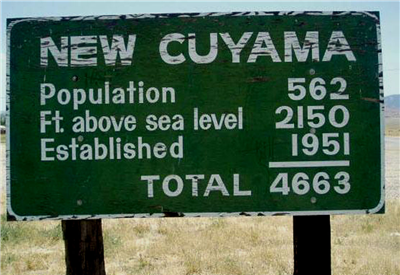
Back to mineralogical analysis link page
Colored Stone January February 2010
 Ask
about Gift wrapping and sending direct to recipient!
Ask
about Gift wrapping and sending direct to recipient!
* We are not set up for online shopping cart buying... so please call Or E-mail us for a purchase.
Newly updated:
The Discovery of Nebula Stone
"The Enchantment of Nebula Stone"
Large
Nebula Stone Gemstone
Palmstones
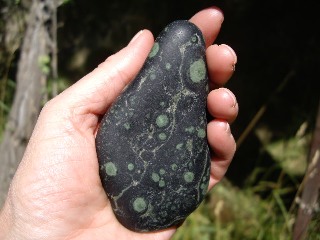
*
NEW
Nebula Stone Nuggets Tumbled Stones
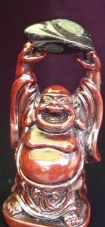
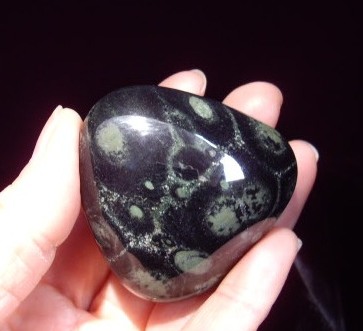
* NEW Large Exquisite Nebula Palm Stones High-grade
Starburst Nebula Palm & Pocket Stones
Nebula Stone Gemstone Mineral Spheres
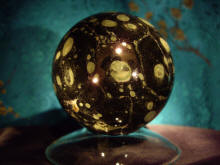
The Nebula Skull Crystal Skull
Nebula Stone Gemstone
Crystal Skulls
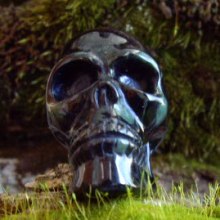
Alien Skull
Stone Supernova Discovery
The Encyclopedia of Crystals by Judy Hall
Nebula Stone in The Book of Stones
Nebula Stone by JaneAnn Dow- Mayan Past
Nebula Stone Review by New Age Retailer
Melody's note about our Discovery
Metaphysical...Published Articles about Nebula Stone
Colored Stone January February 2010
Nebula Stone Rock and Gem Magazine Story
Nebula Stone Gemstone Knife Handle in the making
* NEW Chocolate Galaxy
Geologic Pin ups
* NEW Collector Gallery
Indiana Jones and the Kingdom of the Crystal Skull
___________________________
"The Cosmos a Spacetime Odyssey" with Neil Degrasse Tyssen
_______________________________________
* We are not set up for online shopping cart buying... so please call or E-mail us for a purchase.
If you wish you may share our link with others, just copy and paste www.nebulastone.com into your email.
Privacy: We do not give, sell, trade nor share any of your info!! It’s your stuff.
Color and appearance may vary depending on your monitor and settings.
Crystals and Stones are not a substitute for medical treatment.
Nebula Stone makes no claims, and is not intended to diagnose, treat, cure, or prevent any disease.
If you need help in any way please consult your doctor or other health care practitioner regarding health issues.
Copyright© 1995-2021 Nebula Stone™
the sole source of all Nebula Stone™ or related Nebula type stones.
All rights reserved.